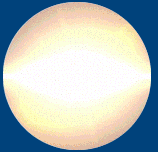Actinobacteria exploration research work was undertaken with an aim to isolate actinobacteria from Pobitora Wildlife Sanctuary and Kaziranga National Park of Assam, India and screening them against an array of microbial pathogens responsible for human pathogenesis. A total of 107 actinobacteria were isolated, of which 77 exhibited significant antagonistic activity. The restriction digestion profile of the 77 antagonistic actinobacteria were analysed by ARDRA fingerprinting analysis using restriction endonuclease. Critical analysis of the dendrogram obtained from (UPGMA) revealed three major clusters consisting of Streptomyces sp. Nocardia sp. and Kribbella sp. Streptomyces sp. Kz-24 (GenBank accession no. KY000533) showed only 96.2% sequence similarity to S. malaysiensis and exhibited minimum inhibitory concentration of 0.024 µg/mL against methicilin resistant Staphylococcus aureus ATCC 43300 and Candida albicans MTCC 227. MIC of the ethyl acetate extract derived from the strain Streptomyces sp. Kz-24 supports the popular notion that antimicrobial metabolites extracted from Streptomyces sp. at very low concentrations can be one of the finest sources of potent antimicrobials for treatment of infectious diseases especially those caused by clinically resistant pathogens, such as P. aeruginosa, MRSA and C. albicans. Twenty-four actinobacterial isolates tested positive for at least one of the polyketide synthase type I, polyketide synthase type II or non-ribosomal peptide synthase genes within their genome. Their secondary metabolite pathway products were predicted to be involved in the production of ansamycin, benzoisochromanequinone, streptogramin using DoBISCUIT database. This study establishes that actinobacteria isolated from the poorly explored Indo-Burma mega-biodiversity hotspot may be an extremely rich reservoir for production of biologically active compounds for human welfare. The above mentioned work is publised in Scientific Reports, (2020), 10:4104. doi.org/10.1038/s41598-020-60968-6, authors: Priyanka Sharma and Debajit Thakur.







